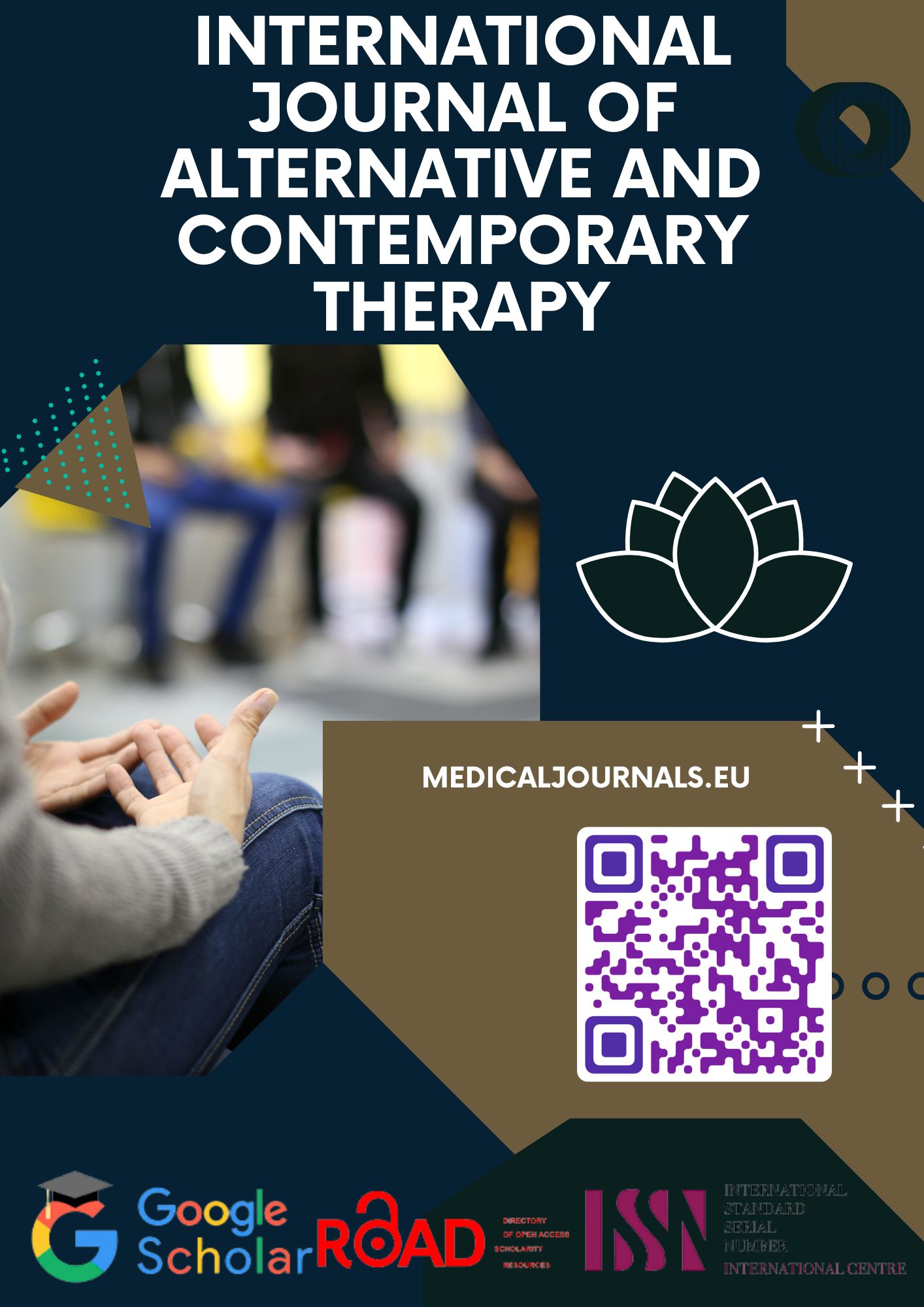A Review of Anti-Diabetic Properties of Heterocyclic Compounds
Keywords:
heterocyclic compounds, phytochemical components, anti-diabeticAbstract
Important properties for medicine and food are provided by the heterocyclic compounds, which comprise phytochemical components. Common traditional medicinal uses for them include treating fever, issues with the skin, constipation, headaches, asthma, colds, and headaches. In addition to these primary side effects, the majority of prescription medications cause gastrointestinal issues. The need for the creation novel, effective anti-diabetic medications with less adverse reactions is consequently significant. Diabetes is an international pandemic, there is a constant demand for new anti-diabetic medications. When compared to natural alkaloids, the heterocyclic synthesized derivatives data exhibit similar properties. Throughout the preceding 20 years, an increasing number of heterocyclic compounds were designed and produced in order to explore their bioactivities. This finding allows researchers to explore the potential for several therapeutic applications of these heterocyclic multilateral derivatives further more.
References
Davis A, Ward SE. The handbook of medicinal chemistry: Principles and practice. Royal Society of Chemistry. 2014. 2. Barret R. Medicinal Chemistry: Fundamentals. Elsevier. 2018. [Google Scholar] 3. Krishnasamy S, Abell TL. Diabetic gastroparesis: Principles and current trends in management. Diabetes Ther. 2018; 9(1): 1-42.
Kitabchi AE, Umpierrez GE, Miles JM, Fisher JN. Hyperglycemic crises in adult patients with diabetes. Diabetes Care. 2009; 32(7): 1335- 43.
Rees CW. Polysulfur‐nitrogen heterocyclic chemistry. J Heterocycl Chem. 1992; 29(3): 639-651.
Vitaku E, Smith DT, Njardarson JT. Analysis of the structural diversity, substitution patterns, and frequency of nitrogen heterocycles among US FDA approved pharmaceuticals: Miniperspective. J Med Chem. 2014; 57(24): 10257-10274.
Zhu Y, Zhao J, Luo L, Gao Y, Bao H, Li P, et al. Research progress of indole compounds with potential antidiabetic activity. Eur J Med Chem. 2021; 223: 113665.
Srividya L, Reddy AR. Antidiabetic activity of 1-(4-Chlorobenzylidene)-5-(2-oxoindolin-3-ylidene) Thiocarbohydrazone in chick model. Asian J Biol Sci. 2017; 10: 126-129.
Kanwal K, Khan KM, Chigurupati S, Ali F, Younus M, Aldubayan M, et al. Indole-3-acetamides: As potential antihyperglycemic and antioxidant agents; Synthesis, in vitro α-amylase inhibitory activity, structure-activity relationship, and in silico studies. ACS Omega. 2021; 6(3): 2264-2275.
Mohamed MA, Abd Allah OA, Bekhit AA, Kadry AM, El‐Saghier AM. Synthesis and antidiabetic activity of novel triazole derivatives containing amino acids. J Heterocycl Chem. 2020; 57(6): 2365-2378.
Kerru N, Gummidi L, Maddila S, Gangu KK, Jonnalagadda SB. A review on recent advances in nitrogen-containing molecules and their biological applications. Molecules. 2020; 25(8): 1909.
Flefel EM, El-Sofany WI, Al-Harbi RA, El-Shahat M. Development of a novel series of anticancer and antidiabetic: Spirothiazolidines analogs. Molecules. 2019; 24(13): 2511.
Gutierréz-Hernández A, Galván-Ciprés Y, Domínguez-Mendoza EA, Aguirre-Vidal Y, Estrada-Soto S, Almanza-Pérez JC, et al. Design, synthesis, antihyperglycemic studies, and docking simulations of benzimidazole-thiazolidinedione hybrids. J Chem. 2019.
Manoharan D, Kulanthai K, Sadhasivam G, Raji V, Thayumanavan P. Synthesis, characterization and evaluation of antidiabetic activity of novel indoline derivatives. Bangladesh J Pharmacol. 2017; 12(2): 167-172.
Sun L, Tran N, Tang F, App H, Hirth P, McMahon G, et al. Synthesis and biological evaluations of 3-substituted indolin-2-ones: A novel class of tyrosine kinase inhibitors that exhibit selectivity toward particular receptor tyrosine kinases. J Med Chem. 1998; 41(14): 2588- 2603
Castro A, Encinas A, Gil C, Bräse S, Porcal W, Pérez C, et al. NonATP competitive glycogen synthase kinase 3β (GSK-3β) inhibitors: Study of structural requirements for thiadiazolidinone derivatives. Bioorganic Med Chem. 2008; 16(1): 495-510.
Licht-Murava A, Plotkin B, Eisenstein M, Eldar-Finkelman H. Elucidating substrate and inhibitor binding sites on the surface of GSK3β and the refinement of a competitive inhibitor. J Mol Biol. 2011; 408(2): 366-378.
Gaisina IN, Gallier F, Ougolkov AV, Kim KH, Kurome T, Guo S, et al. From a natural product lead to the identification of potent and selective benzofuran-3-yl-(indol-3-yl) maleimides as glycogen synthase kinase 3β inhibitors that suppress proliferation and survival of pancreatic cancer cells. J Med Chem. 2009; 52(7): 1853-1863. 21. Engler TA, Henry JR, Malhotra S, Cunningham B, Furness K, Brozinick J, et al. Substituted 3-imidazo [1, 2-a] pyridin-3-yl-4-(1, 2, 3, 4-tetrahydro-[1, 4] diazepino-[6, 7, 1-hi] indol-7-yl) pyrrole-2, 5-diones as highly selective and potent inhibitors of glycogen synthase kinase-3. J Med Chem. 2004; 47(16): 3934-3937.
Osborne A, Teng Q, Miles EW, Phillips RS. Detection of open and closed conformations of tryptophan synthase by 15N-heteronuclear single-quantum coherence nuclear magnetic resonance of bound 1-15N-L-tryptophan. J Biol Chem. 2003; 278(45): 44083-44090.
Pinto A, Neuville L, Zhu J. Palladium-catalyzed domino N-arylation/ carbopalladation/C-H functionalization: Three-component synthesis of 3-(diarylmethylene) oxindoles. Tetrahedron Lett. 2009; 50(26): 3602-3605.
O'Neill DJ, Shen L, Prouty C, Conway BR, Westover L, Xu JZ, et al. Design, synthesis, and biological evaluation of novel 7-azaindolyl-heteroaryl-maleimides as potent and selective glycogen synthase kinase-3β (GSK-3β) inhibitors. Bioorganic Med Chem. 2004; 12(12): 3167-3185.








